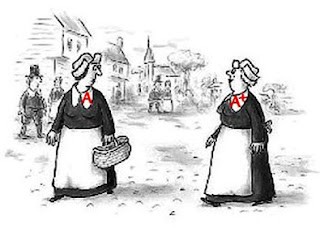New Year's Day is Friday…welcome to 2016. This has become a traditional time of
celebration. We party on New Year's Eve
and celebrate the moment the clock strikes midnight signaling the beginning of
a new year.
And, of course, when the year 2000 arrived we celebrated for
twenty-four hours as each time zone around the earth welcomed the new
millennium on live television broadcasts.
But why and how did the New Year's celebrations become part
of our annual routine? The earliest
recorded account of a celebration in honor of the new year dates back four
thousand years to ancient Babylon. For
the Babylonians, the first new moon following the vernal equinox announced the
arrival of the new year. They celebrated
this spring time event with a massive 11 day religious festival called
Akitu. It was during this time that a
new king was crowned or the current ruler's mandate renewed.
Throughout antiquity, civilizations around the world
developed more sophisticated calendars with the first day of the year
associated with an agricultural or astronomical event. For example, in Egypt the year began with the
annual flooding of the Nile which coincided with the rising of the star
Sirius. In China, the new year occurred
with the second new moon after the winter solstice…a day they still celebrate.
The early Roman calendar had 10 months and 304 days with
each new year beginning at the vernal equinox.
Tradition holds that it was created by Romulus, the founder of Rome, in
the eighth century B.C. Numa Pompilius,
a later king, is credited with adding the months of Januarius and
Februarius. Over the ensuing centuries,
the Roman calendar grew out of sync with the sun. In 46 B.C., Julius Caesar introduced the
Julian calendar which closely resembles the more modern Gregorian calendar used
today by most countries.
As part of his reform, Julius Caesar declared January 1 as
the first day of the year and Romans celebrated by exchanging gifts, decorating
their homes, and attending raucous parties.
In medieval Europe, Christian leaders temporarily replaced January 1 as
the first day of the year with days carrying more religious significance, such
as December 25 as the anniversary of Christ's birth and March 25 as the Feast
of the Annunciation. It was Pope Gregory
XIII in 1582 who re-established January 1 as New Year's Day.
In many countries, New Year's celebrations begin on New
Year's Eve and continue into the early hours of January 1st. These celebrations often include specific
foods that are said to bring good luck for the coming year—grapes in Spain,
round fruits in the Philippines, suckling pig in Austria, soba noodles in
Japan, rice pudding in Norway, and black-eyed peas in the southern United
States. Other customs that are common
worldwide include making new year resolutions (a practice started by the
Babylonians) and watching fireworks displays.
In the United States, the most famous New Year's tradition
is the dropping of the giant ball in New York City's Times Square. This event, first instituted in 1906, occurs
at the stroke of midnight. The original
giant ball was made of iron and wood weighing 400 pounds. A total of 7 versions of the Ball have been
designed over the more than a century since the first drop of the ball
occurred.
Today's giant ball is a brightly patterned sphere 12 feet in
diameter and weighing nearly 12,000 pounds.
Each year, the 2688 intricate Waterford crystals that make up the skin
of the huge orb are replaced with new ones.
For this year's design, 288 of the Waterford triangles introduce the new
Gift of Wonder. The remaining crystal
triangles feature the Gift of Imagination design with a series of intricate
wedge cuts that are mirrored reflections of each other inspiring our
imagination.
The 2,688 triangles are bolted to 672 LED modules which are
attached to the aluminum frame of the ball.
The ball is capable of displaying a palette of more than 16 million
colors and billions of patterns that create a spectacular kaleidoscope effect
as the ball drops down a flagpole at the stroke of midnight Eastern Standard
Time.
So, however you celebrate the arrival of the new
year…whether you go out to a party, have family or a few friends to your home,
or simply curl up by a cozy fire and watch the festivities in Times Square…I
wish everyone a happy and healthy new year.














































